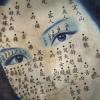CYBERMED LIFE - ORGANIC & NATURAL LIVING
CYBERMED LIFE - ORGANIC & NATURAL LIVING
 The occupational discipline of the traditional Chinese methods of Acupuncture Therapy for treating Disease by inserting Needles along specific pathways or Meridians.
The occupational discipline of the traditional Chinese methods of Acupuncture Therapy for treating Disease by inserting Needles along specific pathways or Meridians.
Acupuncture is a form of alternative medicine in which thin needles are inserted into the body. It is a key component of traditional Chinese medicine (TCM). TCM theory and practice are not based upon scientific knowledge, and acupuncture is a pseudoscience. There is a diverse range of acupuncture theories based on different philosophies, and techniques vary depending on the country. The method used in TCM is likely the most widespread in the United States. It is most often used for pain relief, though it is also used for a wide range of other conditions. Acupuncture is generally used only in combination with other forms of treatment.
The conclusions of many trials and numerous systematic reviews of acupuncture are largely inconsistent, which suggests that it is not effective. An overview of Cochrane reviews found that acupuncture is not effective for a wide range of conditions. A systematic review of systematic reviews found little evidence of acupuncture's effectiveness in treating pain. The evidence suggests that short-term treatment with acupuncture does not produce long-term benefits. Some research results suggest acupuncture can alleviate pain, though the majority of research suggests that acupuncture's effects are mainly due to the placebo effect. A systematic review concluded that the analgesic effect of acupuncture seemed to lack clinical relevance and could not be clearly distinguished from bias. A meta-analysis found that acupuncture for chronic low back pain was cost-effective as an adjunct to standard care, while a systematic review found insufficient evidence for the cost-effectiveness of acupuncture in the treatment of chronic low back pain.
Acupuncture is generally safe when done by an appropriately trained practitioner using clean needle technique and single-use needles. When properly delivered, it has a low rate of mostly minor adverse effects. Accidents and infections are associated with infractions of sterile technique or neglect of the practitioner. A review stated that the reports of infection transmission increased significantly in the prior decade. The most frequently reported adverse events were pneumothorax and infections. Since serious adverse events continue to be reported, it is recommended that acupuncturists be trained sufficiently to reduce the risk.
Scientific investigation has not found any histological or physiological evidence for traditional Chinese concepts such as qi, meridians, and acupuncture points, and many modern practitioners no longer support the existence of life force energy (qi) flowing through meridians, which was a major part of early belief systems. Acupuncture is believed to have originated around 100 BC in China, around the time The Yellow Emperor's Classic of Internal Medicine (Huangdi Neijing) was published, though some experts suggest it could have been practiced earlier. Over time, conflicting claims and belief systems emerged about the effect of lunar, celestial and earthly cycles, yin and yang energies, and a body's "rhythm" on the effectiveness of treatment. Acupuncture grew and diminished in popularity in China repeatedly, depending on the country's political leadership and the favor of rationalism or Western medicine. Acupuncture spread first to Korea in the 6th century AD, then to Japan through medical missionaries, and then to Europe, starting with France. In the 20th century, as it spread to the United States and Western countries, the spiritual elements of acupuncture that conflict with Western beliefs were abandoned in favor of tapping needles into nerves.